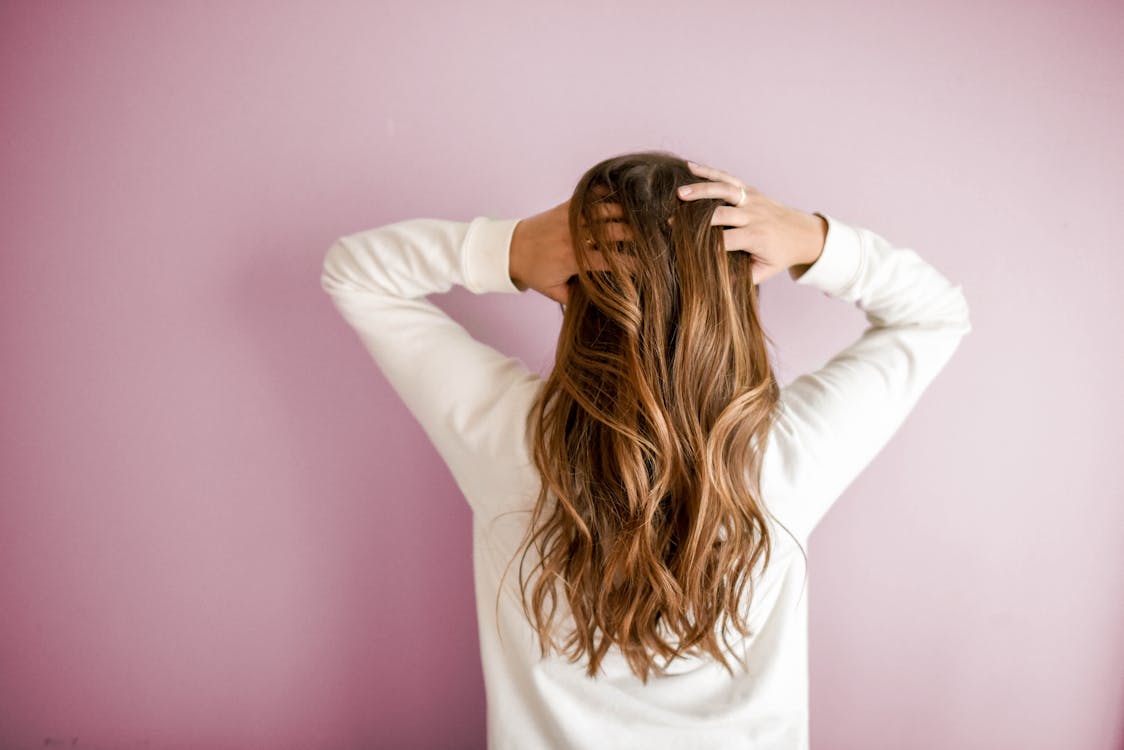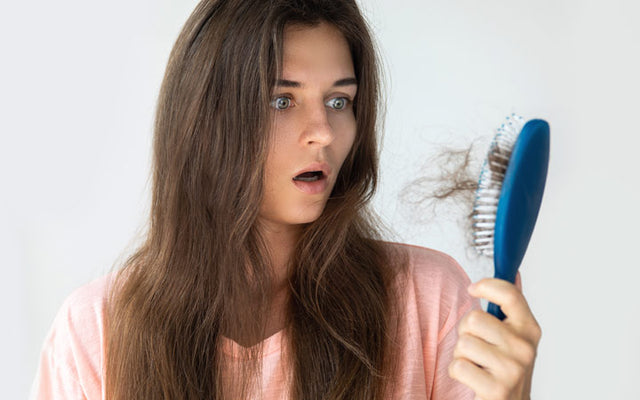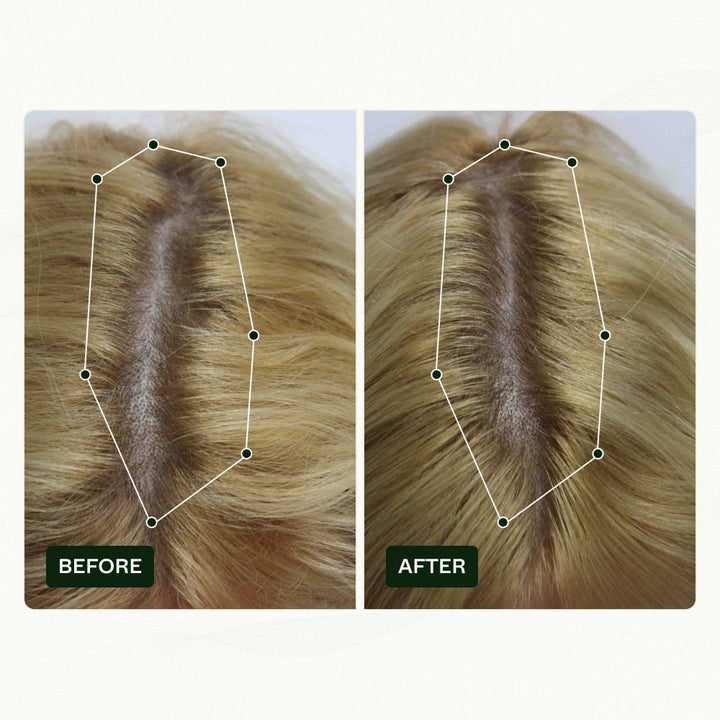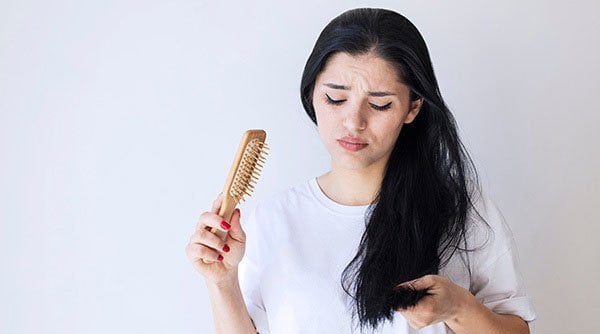Experiencing hair falling out after a dye job can be both alarming and disheartening. Often, we dye our hair to embrace a new look or boost our confidence, but instead of enjoying our fresh appearance, we find ourselves dealing with unexpected hair loss.
This phenomenon, though unsettling, is not uncommon and stems from various reasons, including the harsh chemicals found in hair dyes.
Understanding why this happens is the first step toward preventing it. In this article, we'll dive into the causes behind hair falling out after dyeing and share effective strategies to protect your locks, ensuring that your journey to a new hair color is safe and satisfying.
Table of content
What is a hair dye?

Hair dye is a product used to change the color of one's hair, ranging from subtle shades to more drastic changes. It works by penetrating the hair shaft to alter its color through a chemical process with permanent and semi-permanent dyes or by coating the hair with temporary colors.
Hair dyes come in various forms and strengths, catering to different needs and preferences. Permanent hair dyes chemically change the hair color, allowing for long-lasting color changes, but often using strong chemicals like ammonia and peroxide.
Semi-permanent and temporary dyes, on the other hand, offer a less damaging option by depositing color without significantly altering the hair structure. These products enable individuals to experiment with their looks while maintaining the health of their hair, provided they are used correctly and with care.
As your leading source for hair health information over the past 4 years, we never compromise on accuracy. When it comes to your health, you deserve information you can truly rely on - and earning your trust is our top priority.
Here's how Scandinavian Biolabs ensures every piece of content meets the highest standards of accuracy and integrity:
- Credentialed Experts: Our reviewers are actively practicing doctors and medical researchers
- Stringent Reviews: Content undergoes rigorous editing by subject specialists and review by a practicing doctor.
- Evidence-Based: We rely on well-established research from trusted scientific sources like peer-reviewed journals and health authorities.
- Full Transparency: Our editorial standards, writer credentials, reviewer credentials, correction process, and funding are all publicly documented.
- Independent Voice: While we do promote products, we operate in a vacuum to business operations. Our main goal is just an unwavering commitment to providing medically-sound guidance.
You can count on Scandinavian Biolabs to consistently deliver the trustworthy health information you deserve. Read our Editorial Standards.
What causes hair to fall out after dye?
Hair falling out after dyeing is often due to the harsh chemicals in hair dyes that can weaken and damage the hair shaft and follicles. Here are some specific causes:
- Chemical damage: Hair dyes contain chemicals like ammonia and hydrogen peroxide, which can weaken hair strands by breaking down their natural structure.
- Allergic reactions: Some individuals may have allergic reactions to the ingredients in hair dyes, leading to scalp irritation and hair loss.
- Over-processing: Frequently dyeing your hair or leaving the dye in for too long can over-process the hair, making it brittle and prone to falling out.
- Improper application: Incorrect or failing to follow the product instructions can cause excessive hair damage and loss.
- Pre-existing hair conditions: Dyeing hair that is already damaged or weak can exacerbate hair loss.
What type of hair loss is caused by hair dye?

Hair loss caused by hair dye is typically non-scarring alopecia. In this temporary and often reversible condition, hair falls out due to damage to the hair shaft rather than the hair follicle itself.
Hair dye can lead to hair loss, where the damage is mainly to the hair shaft, making the strands weak and prone to breaking off. This type of hair loss, known as non-scarring alopecia, doesn't permanently damage the hair follicles, meaning the hair can regrow over time.
The chemicals in hair dyes, particularly those in permanent dyes, are strong enough to alter the hair's natural structure. They can cause brittleness, thinning, and breakage by weakening the hair's keratin structure.
This results in what appears to be hair loss but is actually hair breakage from the shaft. With proper care and a break from chemical treatments, the hair usually regains strength and elasticity, allowing for healthy regrowth.
Are certain dyes worse?
Yes, certain dyes are worse for hair health, especially permanent dyes, as they contain stronger chemicals like ammonia and peroxide that penetrate the hair shaft more deeply, causing more significant damage compared to semi-permanent or temporary dyes, which coat the hair surface and are less harmful.
How to stop hair fall and regrow after coloring?
To stop hair fall and regrow hair after coloring, minimizing damage and nurturing your scalp and hair back to health is essential.
Use Bio-Pilixin Serum

The Bio-Pilixin® Serum from Scandinavian Biolabs is crafted as a nurturing product for hair health, featuring an all-natural ingredient blend to enhance hair vitality.
Clinically proven to deliver noticeable improvements within just 45 days, this groundbreaking serum has garnered a 93% satisfaction rate among users in a clinical study.
Its formulation is completely free from drugs, making it suitable for everyday application, and it focuses on providing the necessary nourishment and stimulation for flourishing hair.
Each serum component is meticulously chosen for its quality and backed by extensive scientific research.
One of the key ingredients, Capilia Longa®, sourced from the stem cells of Curcuma longa, has been shown to dramatically decrease hair loss by up to 89–90% and boost hair density by 52% in clinical settings.
Niacinamide is crucial in maintaining hair growth by enhancing circulation and shielding follicles from early demise due to environmental pollutants and UV exposure.
Additionally, the serum contains vanillyl butyl ether, a gentle warming agent that improves blood flow to the scalp, ensuring that hair follicles are well-supplied with vital nutrients and oxygen.
Scandinavian Biolabs stands behind the Bio-Pilixin® Serum with a 150-day money-back guarantee, underscoring their confidence in the product's efficacy.
Use Minoxidil
Minoxidil offers a proven solution to address hair fall and encourage regrowth after coloring. This topical treatment enhances scalp blood flow and nourishes follicles.
It promotes the growth of stronger, thicker hair. Suitable for those experiencing thinning due to chemical damage, Minoxidil requires consistent application, ideally twice daily, directly to the scalp.
Results typically manifest after several months of use, with ongoing treatment necessary to maintain gains. While generally safe for dyed hair, a patch test is advisable to ensure compatibility. Incorporating Minoxidil into your hair care routine can significantly aid in recovering and boosting the health of color-treated hair.
Use gentle hair care products
Opting for sulfate-free shampoo and conditioner is crucial in nurturing dyed hair back to health. Sulfates are harsh detergents that strip hair of its natural oils and color, leading to increased dryness and breakage. By choosing products formulated without sulfates, you can help retain the moisture and integrity of your colored hair, making it less prone to falling out.
Apply nourishing hair masks
Incorporating natural oil treatments into your hair care routine can significantly improve its condition. Oils like coconut, olive, and argan are excellent for deep moisturization, penetrating the hair shaft to repair and strengthen hair from within. Applying these oils as masks can help restore the elasticity and shine lost during the dyeing process, aiding in reducing hair fall and promoting regrowth.
Reduce heat styling
Air drying your hair instead of using heat styling tools is another effective way to prevent further damage. Heat styling can exacerbate the fragility of dyed hair, leading to increased breakage. By allowing your hair to dry naturally, you minimize thermal damage, helping to maintain its strength and reduce shedding.
Trim regularly
Removing split ends through regular trims is essential for maintaining the overall health of your hair. Split ends can travel up the hair shaft if uncut, causing more significant breakage and hair loss. Trimming your hair every 6-8 weeks can prevent this, encouraging healthier growth and reducing the appearance of thinning.
Scalp massage
Stimulating blood flow with regular scalp massages can enhance hair growth. Massages increase circulation to the scalp, nourishing hair follicles with a greater supply of oxygen and nutrients. This improved follicle health can accelerate hair growth and aid in the recovery process after dyeing.
Avoid over-processing
Lastly, limiting chemical treatments is crucial for preventing additional damage to your hair. Frequent dyeing, especially with permanent dyes that contain harsh chemicals, can lead to chronic hair fall and hinder regrowth. Extending the time between coloring sessions and opting for less damaging dye formulas can give your hair a chance to recover and regain its strength.
Tips to prevent hair fall after dyeing it

It's crucial to adopt hair care practices that minimize damage and maintain scalp health to prevent hair fall after dyeing.
- Choose the right dye: Opt for ammonia-free, natural, or semi-permanent dyes to reduce chemical exposure.
- Deep conditioning: Regularly use deep conditioning treatments to restore moisture and strength.
- Limit heat styling: Reduce heat styling tools and use a heat protectant when necessary.
- Avoid over-washing: Washing your hair less frequently helps retain natural oils that protect your hair.
- Gentle handling: Be gentle when brushing, and avoid tight hairstyles that can pull on the roots.
- Healthy diet: A balanced diet rich in vitamins and minerals supports hair health from the inside out.
- Scalp care: Use products designed for scalp health to ensure a healthy environment for hair growth.
- Regular trims: Trimming ends regularly can prevent split ends from causing further damage.
Conclusion
In conclusion, preventing hair fall and promoting regrowth after dyeing involves selecting less harsh dyes, nurturing hair with deep conditioning, minimizing heat styling, reducing wash frequency, handling hair gently, maintaining a nutrient-rich diet, caring for the scalp, and getting regular trims.
These steps help mitigate the damage caused by hair dye, supporting healthier, more robust hair growth.
FAQs
Can hair dye cause permanent hair loss?
Hair dye typically causes temporary hair loss due to breakage and damage to the hair shaft rather than permanent hair loss from the follicle. However, severe chemical damage or allergic reactions can potentially lead to more permanent effects if the scalp is badly damaged.
How often should I condition my dyed hair?
Dyed hair benefits from regular conditioning to maintain moisture and elasticity. Using a conditioner every time you shampoo and applying a deep conditioning treatment at least once a week is recommended.
Is it safe to use heat styling tools on dyed hair?
While it's safe, excessive heat styling can further damage dyed hair. It's crucial to use a heat protectant spray and limit the use of heat tools as much as possible to preserve hair health.
What diet is best for preventing hair fall after dyeing?
A diet rich in proteins, vitamins (especially A, C, D, and E), minerals (like iron, zinc, and selenium), and omega-3 fatty acids supports hair strength and can help minimize hair fall.
How can I tell if a hair dye is damaging my hair?
Signs include increased dryness, brittleness, breakage, thinning, and changes in texture or an itchy, irritated scalp. If you notice these symptoms, consider consulting a professional and revising your hair care routine.
References:
Read more:
- Does Hair Dye Cause Hair Loss?
- 18 Reasons Why Your Hair Won't Grow & How To Fix
- Does Washing Hair Everyday Cause Hair Loss?
- How To Grow Your Hair Overnight?






